Why India’s Schools Should Reopen Right Now
The balance between children’s safety against the Covid-19 pandemic and their right to protect their future livelihoods needs to be restored. The national interest demands no more time is lost in restarting India’s long shuttered schools with adequate safety protocols, writes Dilip Thakore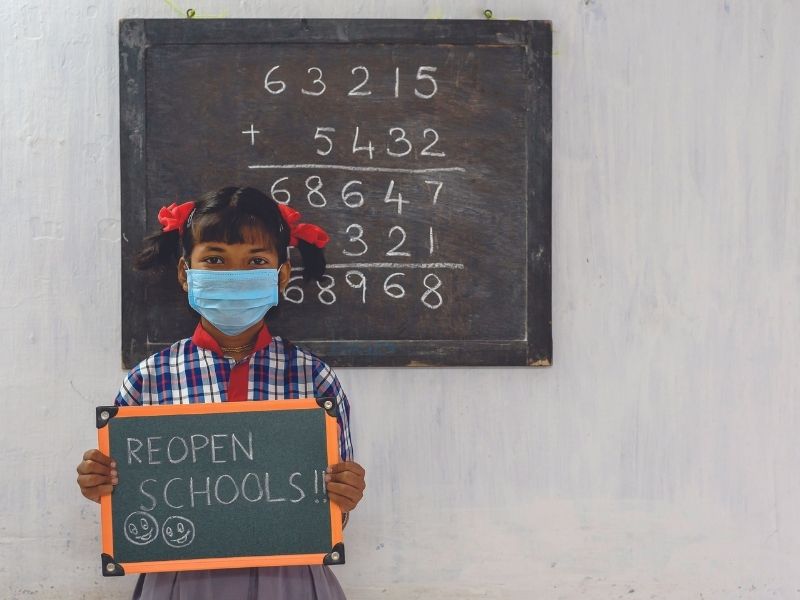
Loss of lives and livelihoods has been the focus of official and media attention for the past 15 months since the deadly novel Coronavirus began to spread countrywide in March 2020. However beyond official declarations and media headlines, 21st century India’s already ramshackle education system that has long under-served the world’s largest child and youth community estimated at a massive 500 million, has suffered further damage. Now, even as the national drive to vaccinate 1.3 billion citizens against the malignant virus is gathering momentum and daily infections and fatalities have declined from a peak of 412,000 and 3,980 on May 6 to 48,786 and 1,005 currently, this is an appropriate time to measure the extent of damage to the education system from preschool to Ph D, and strategise ways and means to repair it.
Thus far, the Union and state governments have availed the soft option of a comprehensive lockdown of all campuses and classrooms of over 2 million preschools (including 1.6 million government anganwadi centres); 1.5 million primary-secondaries (including 450,000 private schools) with an aggregate enrollment of 260 million children; and 39,931 undergrad colleges and 979 universities with a total enrolment of 39.4 million youth, for over 15 months.
The damage suffered by the world’s largest child and youth population by way of loss of learning during the past 56 weeks — the longest shutdown of education institutions worldwide — has not been adequately assessed.
According to a detailed Unesco study titled Education from Disruption to Discovery (2021), the prolonged closure of primary-secondary schools in India of 56 weeks and counting, is in sharp contrast to Russia’s 13 weeks, China’s 27, UK 27, France 12, South Africa 37 and Tanzania 15. Only the US (56 weeks) and Brazil (53) have shut their schools for as long.
However, it is pertinent to note that the US and European countries are far ahead of India in terms of children’s access to Internet connectivity and digital learning devices. According to a recent study conducted by the India office of Unicef (School Closures in the Context of Covid, 2021), 42 percent children in the 5-13 age group in six states surveyed for the study, haven’t accessed any remote learning content in the year after schools closed in March 2020. Worse, 36 percent of girls and 33 percent boys in the age group 14-18 didn’t access remote learning content either.
Indeed, because of continuous under-investment in public education for over six decades after independence, the digital divide between rich and poor, urban and rural is very wide and becoming wider. According to a report in the Economic Times (June 24), official data of the Union education ministry indicates that 70 percent of children in six major states of the Indian Union (Maharashtra, Madhya Pradesh, Jharkhand, Karnataka, Uttar Pradesh, and J&K) don’t have access to digital devices. As a result the number of children who have dropped out of the education system runs into millions. Consequently, the number of children in the labour force has increased exponentially, girl children are forced into early marriage and often into prostitution, and crime and criminality are set to explode.
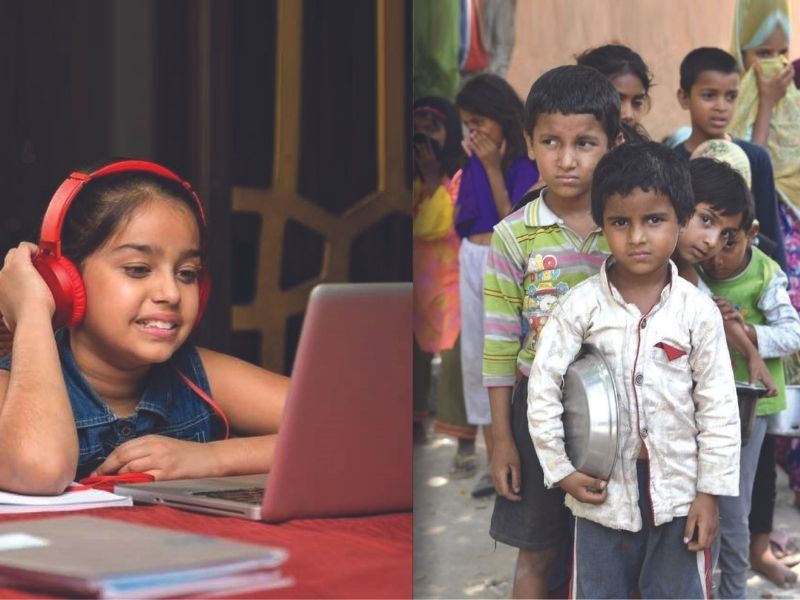
Despite this desperate situation, neither the Central nor any state government has exhibited any urgency to devise meaningful strategies to address this ballooning crisis. Although teachers and staff of the country’s 1.2 million government schools have been paid their full remuneration for over 15 months despite all schools being shuttered, neither the prime minister’s professedly Rs.20,000 crore pandemic relief package announced with great fanfare in May 2020, nor thereafter, has any financial relief been provided for the country’s 450,000 private independent (‘unaided’) schools which host 47.5 percent (119 million) of school going children, to pay their teachers and staff. As a result a huge number of the country’s unique budget private schools (BPS) which provide low priced education to an estimated 60 million children from lower middle and working class households, have gone out of business. A disproportionate number of their parents either self-employed or working in MSMEs (micro, small and medium enterprises) have lost their jobs or suffered salary cuts and are unable to pay even rock-bottom (Rs.6,000-25,000 per year) fees levied by BPS.
The sorry condition of our education system, especially the primary-secondary school system is the outcome of newly independent India having foolishly adopted the inorganic Soviet-inspired public sector-led capital-intensive economic development model propagated by the Delhi School of Economics, instead of the labour-intensive light goods model advocated by the Bombay school. Since then with government tax revenues and people’s savings invested in capital-intensive and generally loss-making public sector enterprises (PSEs), public, i.e, government schools have been continuously under-funded across the country. For the past seven decades since independence, annual expenditure (Centre plus states) for public education has never exceeded 4 percent of GDP and has averaged 3.5 percent against the global average of 5 percent and 7-10 percent spent in developed OECD countries.
Thus almost 500,000 private schools have mushroomed across the country to educate the progeny of the dominant middle class which shuns dysfunctional government schools defined by crumbling buildings, lack of toilets, chronic teacher absenteeism, English language aversion and abysmal learning outcomes, like the plague. And instead of making efforts to raise teaching-learning standards in the country’s 1.2 million government schools to private schools standards, the prime objective of education officials in Delhi and state capitals seems to be to pull private schools — many of them globally-benchmarked and respected — down to government schools level. Dozens of laws have been passed to regulate the fees, admission processes, syllabuses, curriculums and administration of private schools. Ditto in private colleges, universities and institutes which host 70 percent of students in higher education.

The Outcome of decades of underfunding public education and unwarranted government interference with private schools has been disastrous. As has been painstakingly recorded year after year by the Annual Status of Education Report of the globally respected Mumbai/Delhi-based Pratham Education Foundation (estb.1994), over 50 percent of class VII students in rural primaries can’t read and comprehend class III texts or solve simple multiplication and division sums. Moreover, several authoritative studies indicate that 80-85 percent of arts, science and commerce graduates and over 70 percent of engineering graduates are not ready for employment in Indian and foreign multinational companies. Most Indian IT corporates that hire engineering graduates by the thousands are obliged to run full-fledged colleges to provide additional education to make them workplace ready.
Yet despite the critical importance of developing human capital, official initiatives to measure and repair the additional damage caused to the already frail Indian education system by the Coronavirus, have been desultory and half-hearted. On the contrary, the neta-babu brotherhood in the Union education ministry at the Centre and the states have taken advantage of the Covid disruption to attempt to drive private schools out of business.
Desperate appeals of BPS promoters and managements for grant of MSME (micro, small and medium enterprises) status to qualify them for debt moratoria and concessional credit from public sector banks to tide them over the pandemic crisis, have fallen on deaf ears in governments at the Centre and states. Ditto a detailed sui generis cover story titled Prime Minister: Indian Education Needs Pandemic Package (EW, October 2020) advancing a compelling case for private schools — especially BPS — directly couriered to the PMO and the Union education minister.
Unsurprisingly, the Delhi-based NISA (National Independent Schools Alliance) which has a membership of 55,000 BPS countrywide, believes that education minister Dr. Ramesh Pokhriyal and ministry officials are deliberately blocking all attempts to award MSME status to BPS to force many of them into bankruptcy so their students will have no option but to rejoin government schools from which they fled in the pre-pandemic era. Shockingly, instead of supporting and enabling the country’s 50,000 reputed private schools — several hundred of them globally benchmarked and respected — the education establishment seems quite willing to drive them also into bankruptcy.
Therefore, despite the landmark judgement of the Supreme Court in TMA Pai vs. Union of India (2002) in which a full bench of justices of the apex court conferred wide autonomy on private education institutions and affirmed the fundamental right of all citizens to engage in the vocation of education and make reasonable profit for re-investment towards institutional growth and development, most state governments have passed laws imposing tuition and other fees ceilings on private schools.
Moreover, many state governments have been delaying reimbursements due to private schools under s.12 (1) (2) of the historic Right of Children to Free and Compulsory Education Act (RTE) 2009. Under s.12 (1) (c) of the Act, schools are obliged to reserve 25 percent of capacity in elementary classes (I-VIII) for children from poor households in their neighbourhood free-of-charge, with the proviso that state and/or local governments will reimburse part of their cost of education calculated on the basis of per capita education cost incurred in government schools.
Even more brazenly, during the pandemic, several state governments have issued directives to private school managements to refrain from collecting contracted school fees for the lockdown year 2020-21, while insisting that they pay full contracted remuneration to teachers and employees and conduct online classes.
For instance, in Karnataka the state government issued a circular to private schools to collect only 70 percent of the tuition fee (and no other fees) for the academic year 2020-21. Thus, overheads, campus maintenance and other expenses have to be borne by the management. This directive has been challenged and is part-heard in the Karnataka high court.
This concerted effort by the Central and state governments to destroy the finances of private schools during the pandemic is compounded by continuous procrastination on the issue of reopening the country’s 2 million pre-primaries (including 1.4 million anganwadis) and 1.5 million primary-secondary schools nationwide. As noted above, a large number of countries around the world have restarted schools after brief lockdowns. Yet in India, the authorities seem oblivious to the immense learning loss suffered by India’s already educationally short-changed children, and its serious impact in terms of employment, livelihoods and loss of future income.
“There is a clear and present danger of millions of children who have been deprived of primary education for over one year, never being able to catch up and attain age-appropriate levels of learning. This will adversely affect their income-earning potential in later adult life. A study conducted by RISE (Research Improving System of Education), a £43-million multi-country research programme of Oxford University, studied the impact of a devastating earthquake that rocked Pakistan in 2005 on children’s education. It found that children who missed one year of primary school, fell behind by 1.5-2 years and never attained full potential throughout their school years. The study also found these children suffered income loss of 15-20 percent in adulthood.
Although many countries worldwide have restarted schools after brief lockdowns, in India the authorities seem oblivious to the huge learning loss suffered by children

“The Pakistan earthquake forced children out of school in one-two districts. But the pandemic lockdown has forced India’s 260 million children out of school education nationwide for over 15 months. Loss of 15-20 percent of income for millions of adults in the coming years will have a massive adverse impact on national GDP growth. Therefore, it’s a national imperative that children are immediately back in school with adequate health and safety safeguards,” says Prof. Geeta Gandhi Kingdon, chair of education economics and international development at University College, London, and also president of the City Montessori School, Lucknow, certified by Guinness World Records as the world’s largest single-city school with 57,000 students studying on its 17 campuses.
Even as politicians continue to dither on the issue of reopening schools which threatens the future quality of life of the world’s largest child and youth population, the worst affected will be youngest children in pre-primary education. It’s chastening to recall that until the dawn of 21st century, there was minuscule awareness of the vital importance of professionally administered early childhood care and education (ECCE) within the establishment and society. However, after Dr. James Heckman whose research studies demonstrated that a dollar invested in ECCE saved $16 in higher education in terms of benefits to society, EducationWorld together with the then newly formed ECA (Early Childhood Association of India) went into mission mode to impact the importance of ECCE as the building block of the education continuum.
This mission proved successful to the extent that the National Education Policy (NEP), 2020, presented to the nation last July, accords high importance to ECCE and mandated five years of early years education for every child in a new 5+3+3+4 primary-secondary education system to replace the century-old I-XII system. This new format makes three years of pre-primary compulsory for all children. Unfortunately, the pandemic lockdown has gravely threatened this systemic architecture and could nullify the long struggle for compulsory ECCE for all children.
“I fear that youngest child will suffer the greatest damage because of the prolonged lockdown of schools, including pre-primaries and daycare centres, during the pandemic. Since infants can’t be expected to mask, maintain social distance and observe Covid protocols, a majority of middle-class parents have resorted to home schooling them. In this situation although children’s learning loss may be contained, their emotional development, socialisation skills and self-respect are certain to be adversely affected. Because of the too prolonged closure of schools, many years of work to impact the value of professionally provided ECCE to children in their most important formative years has gone down the drain,” laments Dr. Swati Popat Vats, president of the Podar Jumbo Kids chain of 498 owned and franchised preschools countrywide founder-president of ECA and a pioneer crusader for universal formal ECCE.
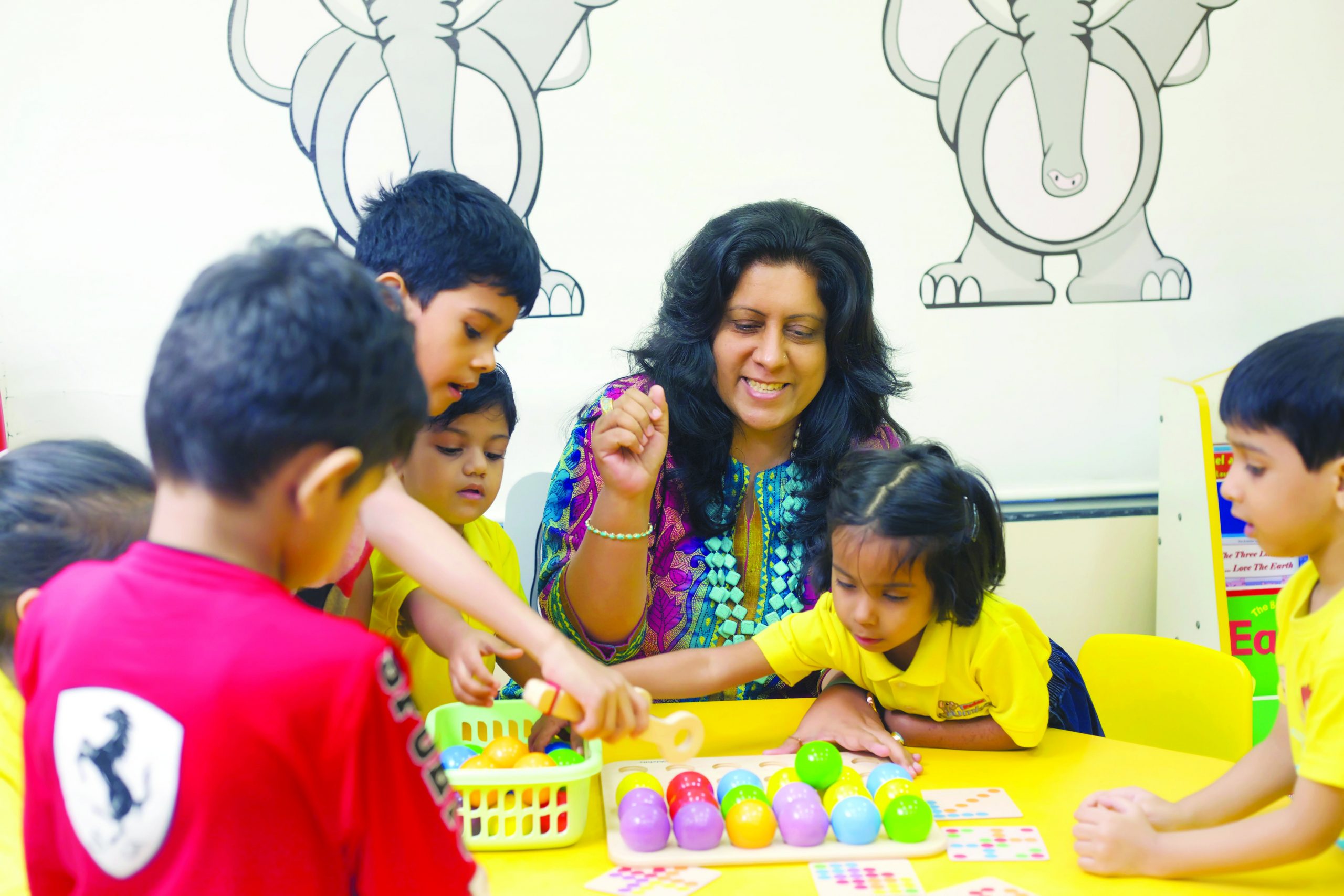
Dr. Popat Vats: expert committees solution
To remedy this situation Dr. Popat Vats suggests that all state governments constitute expert committees of educationists to suggest measures to restart pre-primaries and especially, the country’s 1.6 million government anganwadis which provide nutrition to lactating mothers and new borns, and also a modicum of ECCE to youngest children. “These expert committees could prescribe safety measures and examine the feasibility of pre-primary children studying in clusters of 8-12 in bio bubbles, as they do in UAE preschools to prevent spread of infection. On our part, ECA is prepared to depute ECCE professionals to every state government committee to suggest baby steps to remedy learning loss and restore normalcy in ECCE,” says Popat Vats.
Inevitably the comprehensive national lockdown of education institutions for over 15 months has hit India’s at best of times cruelly under-provided rural school children hardest. With schools shut down and only 15 percent of rural households connected with the Internet, with a mere 4 percent able to afford smartphones and digital devices, an estimated 24 million children have been prematurely pushed into the labour force, and girl children into early marriage and worse. “The national lockdown took away the autonomy of rural India and forced closure of schools even in remote communities not affected by the Coronavirus. It has hit girls education disproportionately and set back education in rural government schools by at least ten years,” says New Zealand-born Meagan Fallone, the highly-qualified (Yale, UCL, Harvard), (until recently) chief executive of the globally renowned Barefoot College International (BCI), Tilonia, Rajasthan established by Doon School and St. Stephen’s college alumnus Bunker Roy in 1972. With affiliated clones in 15 states across India and 96 developing countries around the world, since Fallone took charge as CEO of this unique institution which isn’t ‘recognised’ by government (and media) in 2010, it has morphed into Barefoot College International.
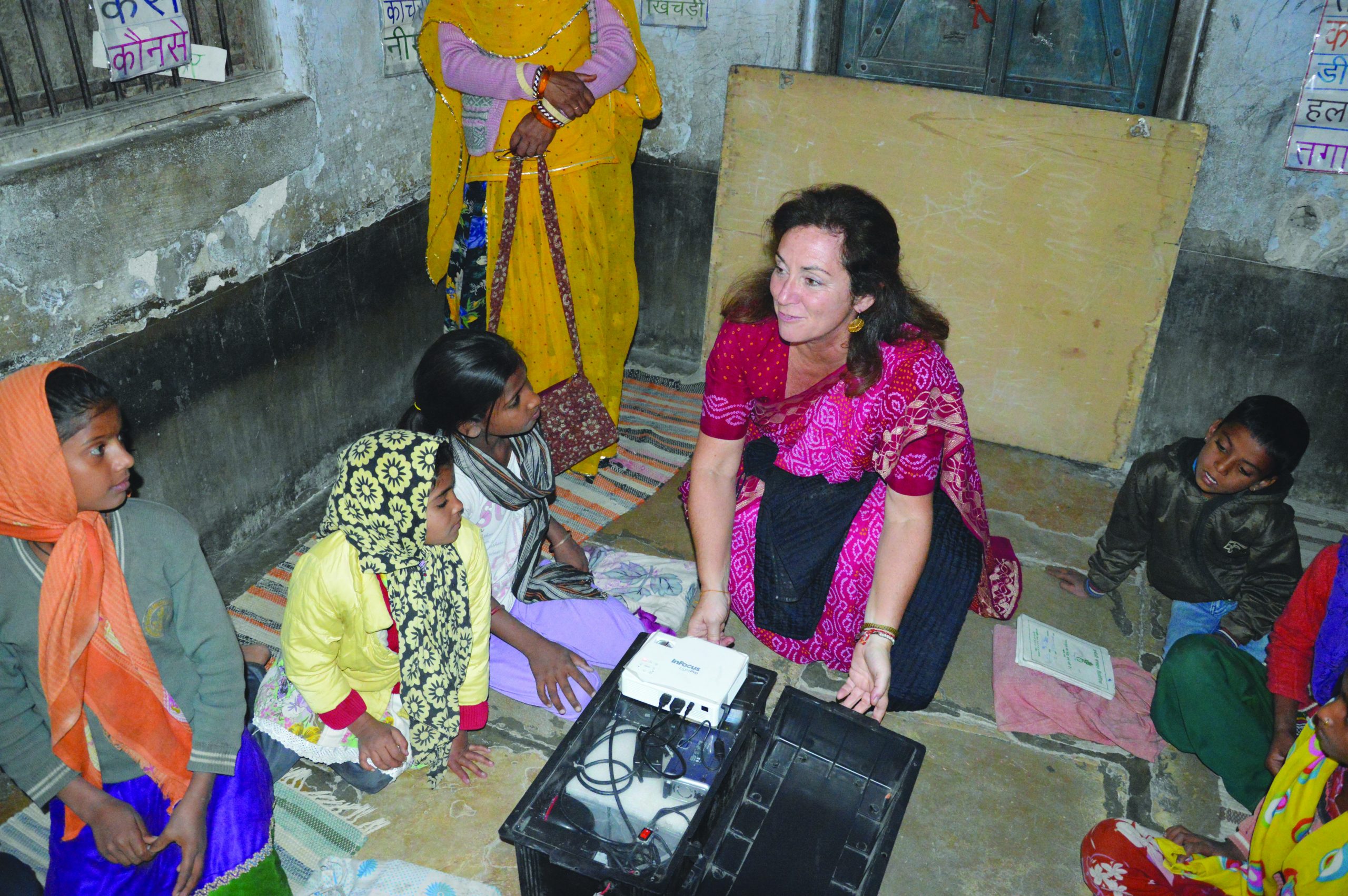
Fallone: changed mindset benefit
One of the first initiatives of BCI which transforms ‘barefoot’ villagers into solar power and water-harvesting engineers, was to establish night schools for children in Rajasthan who are obliged to take cattle for grazing. Over the years Barefoot College has established 38 night schools in Tilonia district and supports another 35 in neighbouring areas. According to Fallone, children in these primaries were provided smartphones and tablets in 2015. “We have successfully devised our high-touch, hi-tech learning-from-home hybrid pedagogy under which children remain in touch with their teachers and peers through smartphones and tablets to develop the 3 C’s — connection, competence and confidence. BCI is willing to provide this pedagogy model to all government and private primaries that may be interested,” adds Fallone.
But even as she believes that the national lockdown of schools has severely disrupted primary education, Fallone discerns a silver lining to the Covid cloud that has enveloped the country. She is convinced that the pandemic has changed the rural mindset and blown away all resistance to digital technology.
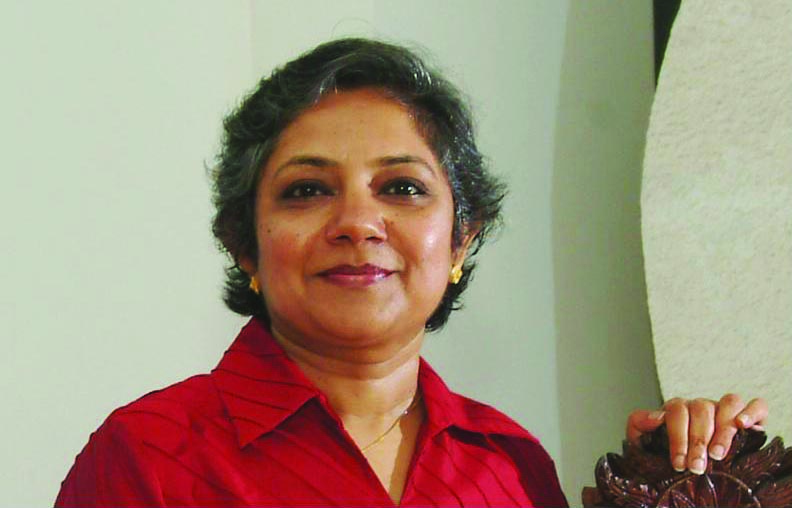
Ravichander: remedial education urgency
“Today every rural household urgently wants Internet connectivity and to own at least one digital device. Access to high quality content from around the world and reduced dependence on teachers is likely to level the playing field for rural children. If the government can ensure one digital device per rural family it will make a fantastic difference to Indian education and boost rural productivity for years to come. We need to harvest this unexpected gain of the Covid pandemic,” says Fallone.
Meanwhile, the low priority currently being accorded to drawing up detailed safeguards to protect children and reopen the country’s education institutions, especially 1.5 million primary secondary schools shuttered for 56 weeks, is indicative of inadequate awareness within the Central and state governments — and within Niti Aayog, the government think-tank — that procrastination on this issue is likely to result in a massive rise in unemployment and productivity loss in Indian industry, agriculture and the economy, as under-prepared graduates enter the adult workforce. This development if unaddressed is certain to derail the BJP/NDA government’s grandiose plan to transform India into a $5 trillion economy within the next three years.
“With domestic and international competition, especially from our neighbour nation China becoming intense, India Inc increasingly needs graduates with passion, high IQ and EQ, knowledge, drive for success, capability and energy. Unfortunately, the protracted lockdown of education institutions countrywide has seriously disrupted learning at all levels and will create a huge shortage of graduates with these qualifications. Therefore, urgent remedial education programmes, especially in schools, are absolutely necessary to ensure that children with strong foundations can derive the full benefit of higher education. While the demand for IIT graduates and top-ranked engineering colleges is good, for graduates from tier-II and tier-III colleges without strong foundational education, finding jobs is likely to be a stiff challenge. That’s why early reopening of education institutions and intensive bridge and remedial study programmes to make up for lost learning of the past 15 months is crucial,” says Hema Ravichander, an IIM-Ahmedabad alumna and former global head of human resources at Infosys Ltd, and currently a Bengaluru-based business consultant.
Typically, Industry leaders are wary about finding fault with government management of the Covid-19 pandemic despite delayed acknowledgment, insufficient notice of a comprehensive lockdown which inflicted heavy suffering on migrant workers fleeing urban habitats, fudged pandemic relief package, delayed orders for vaccines, and neglect
of education.
B.V.R Mohan Reddy, chairman of education council of the Delhi-based Confederation of Indian Industry (CII), the largest representative organisation of India Inc, believes that the BJP/NDA government’s national 15-month lockdown of all education institutions is justified because safety and well-being of the country’s children should be a “top national priority”. “Extreme caution on the issue of reopening schools is justified because there is a great deal of uncertainty about impact of the virus on vulnerable children, particularly since highly infectious new variants are emerging,” says Reddy.
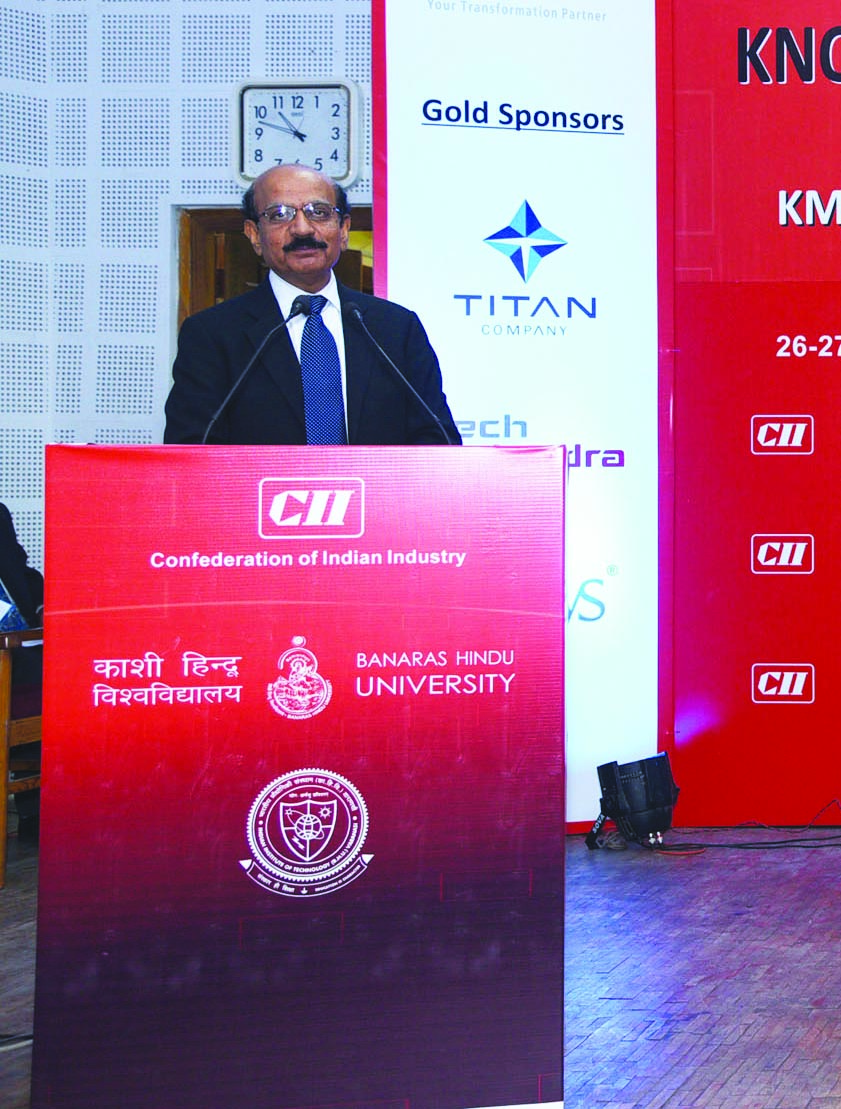
Reddy: unprecedented opportunity
Although he admits that damage caused to the economy because of the prolonged closure of education institutions will be “considerable”, Reddy believes that the pandemic has provided an unprecedented opportunity to improve learning outcomes in Indian education. “With even poorest rural households receptive to digital connectivity and new technology devices, all resistance to digitally-enabled education has melted away. Government and industry working together need to ensure provision of low-cost digital devices to every classroom and child. A massive switch to hybrid pedagogies and teacher training to assist children to access high quality content from across the country and the world, will not only make up for lost learning, but also hugely improve students learning outcomes in the future,” says Reddy.
Some reflection makes it clear that resistance to reopening schools urgently is within the establishment and middle class, which has the wherewithal to continue children’s learning from home. Yet the wide digital divide between urban middle class India and rural households in the hinterland and base of the country’s iniquitous socio-economic pyramid is a strong argument in favour of immediate reopening of all education institutions, starting with universities and colleges where students can be presumed to understand the rationale for safety precautions.
Moreover, thus far there is no evidence that children are any more vulnerable to the dread virus than the adult population. According to the London-based weekly The Economist (June 26), arguably the world’s most widely read and authoritative news magazine, “Covid-19 rarely makes children very ill. In the year to April the chance of an American aged 5-14 catching and dying from the virus was about one in 500,000 — roughly a tenth of a child’s chance of dying in a traffic accident in normal times.”
Therefore, even after allowing for more undisciplined traffic in India, children are not as vulnerable as is officially proclaimed, and generally accepted. In the circumstances there is a strong case in favour of permitting schools that promise to practice safety protocols such as periodic sanitisation, masking, handwashing and allowing only half of students in class per day, to restart on-campus classes. Adds The Economist: “Young brains are being starved of stimulation. Primary-school pupils in England are around three months behind where they normally would be; children in Ethiopia learned 60-70 percent less than usual during 2020. Even before the pandemic things were bad. More than half of ten-year-olds in low- and middle-income countries could not read a simple paragraph. The World Bank warns this could rise to almost two-thirds. In all countries school closures will widen the gap between better-off pupils (who have iPads and quiet bedrooms for remote learning) and worse-off ones (who often don’t).”
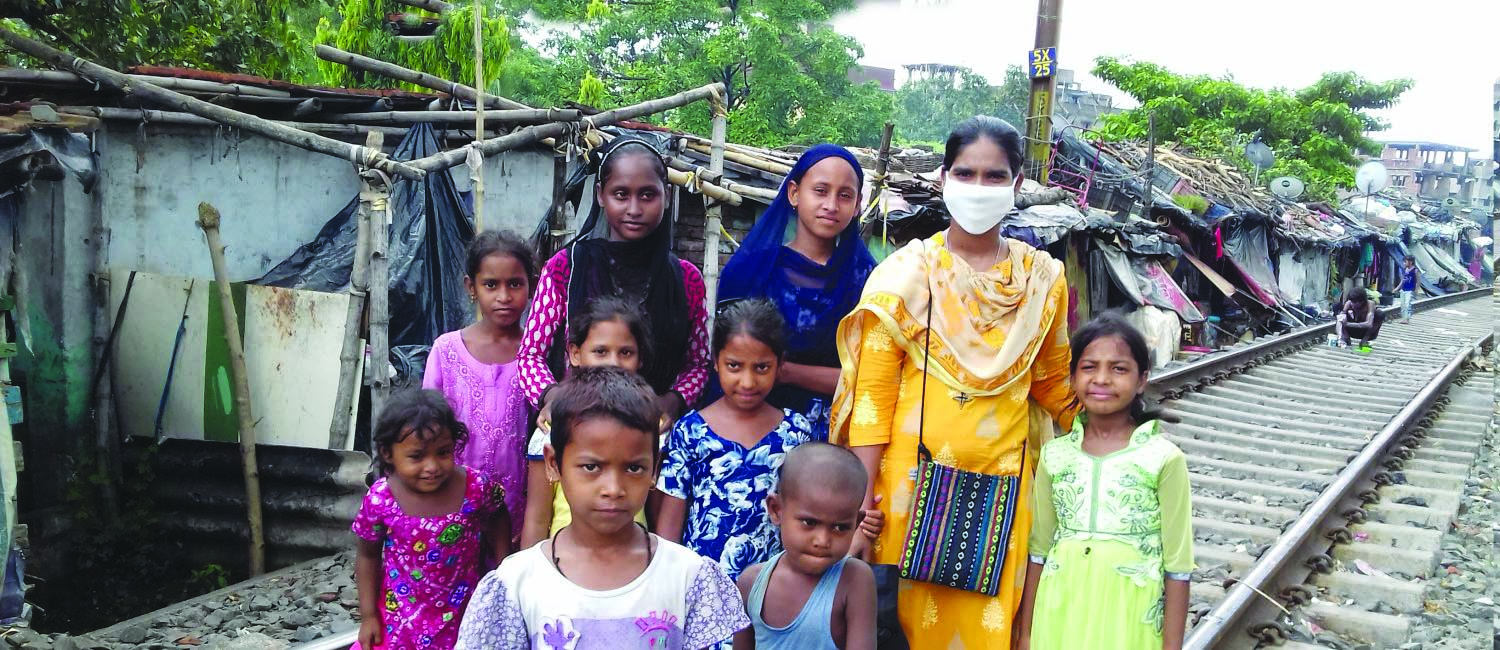
Slum dweller children in Kolkata: safer in school
The plain truth as The Economist comments is that few governments worldwide have “carefully weighed the costs and risks of reopening schools,” and India is no exception. It’s pertinent to recall that when the presence of the novel Coronavirus was acknowledged in mid-March 2020, schools were immediately ordered to shut down, prior to promulgation of the comprehensive national lockdown on March 25, and have remained shuttered since. While such solicitude for the health and well-being of children is admirable, it’s becoming increasingly clear that while their lives have been substantially protected, children’s education which will shape their livelihoods, careers and income generation capabilities has been severely damaged. Bottom-of-pyramid citizens obliged to reside in cramped joint family homes without digital connectivity and devices would much rather send their children to schools that observe basic Covid safety protocols.
Fifteen months after the lockdown of all education institutions nationwide during which already educationally short-changed children have lost an estimated two years of learning, and daily Covid positivity having flattened to below 5 percent, its time for the omniscient neta-babu brotherhood of the Centre and state governments to devolve the power to restart schools upon institutional managements and parents. Typically the official brotherhood has infantilised these major stakeholders in education for almost two years. Now it’s patently obvious that they are best qualified to decide if and when education institutions have implemented Covid protocols to restart children’s education.
School managements and parents are best positioned to decide if education institutions have implemented Covid safeguards
Devolving the schools restart and attendance decision to school principals and parents with the latter obliged to sign consent letters allowing their children to attend in-school classes, is the best way forward to resume and continue learning. It’s foolish of government to continue to believe that even after experiencing the worst ravages of the virus for almost two years, principals and teachers are oblivious of pandemic protocols and ways and means to provide safe learning environments for students.
With a children’s vaccine around the corner, the Centre and state governments need to urgently devolve and localise the decision to restart schools upon principal stakeholders subject to provision of safe learning environments. The balance between children’s safety and their right to protect future livelihoods needs to be restored. The national interest demands no more time is lost in restarting India’s long shuttered schools.
India’s wide digital divide
According to an India report of Unicef (United Nations Children’s Fund) titled Rapid Assessment of Learning During School Closures in the context of Covid (May 2021), the closure of all schools since March 2020 has disrupted the learning of 286 million children in pre-primary to higher secondary schools. Of them only 60 percent have used any remote learning resources; and even among them, nearly 80 percent report that they are learning less or significantly less than in school. The study suggests that the main reasons are:
• Digital channels are not as accessible as often perceived. Ten percent of students overall do not have access to any of the following devices — smartphone, feature phone, television, radio, or laptop/computer with significant variation between states. More than 10 percent of students do not have access to mobile phones within or outside of their households.
• Even when students have access to devices, awareness about using them for remote learning maybe low. Of the respondents who did not use any remote learning opportunities, 45 percent report not being aware of any resources from which to learn. Television and feature phones are particularly underutilized for learning.
• Fewer girls, younger students, rural students and government school students use high-tech tools.
• Availability of key offline resources, textbooks and teachers remain far from universal. Despite many states distributing textbooks for the new academic year, nearly one in three parents still asks for support with textbooks and other learning materials. Nearly 30-40 percent of students are not in touch with their teachers, though this varies significantly by state.
• Remote learning resources are less effective than in-school teaching. Other than home visits, more than half of teachers surveyed perceive remote learning materials and methods to be less effective than classroom teaching.
• Poor mental health holds students back. About a third of elementary students (as perceived by their parents) and nearly half of secondary students feel that their mental and socio-emotional health has been poor or very poor since May 2020.
• Students from migrant and scheduled tribes (ST) families face greater challenges. When parents were asked if their children were learning as much as before the pandemic, 15 percent more migrant parents and 9 percent more ST parents reported that their children are learning less now. Parents of children from migrant families (60 percent) and from ST families (53 percent) rated their children’s mental and socio-emotional well-being as poor or very poor.
Source: Unicef
Post-pandemic recovery roadmap
In a policy brief document titled Education During Covid-19 & Beyond (August 2020), Unesco has provided a roadmap for its 193 member countries to mend their education systems devastated by the Covid-19 global pandemic. Excerpts from the 26-page document.
The Covid-19 pandemic has created the largest disruption of education systems in history, affecting nearly 1.6 billion learners in more than 190 countries and all continents. Closure of schools and other learning spaces have impacted 94 percent of the world’s student population, up to 99 percent in low and lower-middle income countries. Preventing a learning crisis from becoming a generational catastrophe requires urgent action from all.
In order to mitigate the potentially devastating consequences of the Covid-19 pandemic, governments and education stakeholders are encouraged to pursue the following policy responses.
• Suppress transmission of the virus and plan thoroughly for reopening schools. The single most significant step that countries can take to hasten the reopening of schools and education institutions is to suppress transmission of the virus to control national and local outbreaks.
• Protect education financing and coordinate for impact. Preserve the share of expenditure for education as a top priority and address inefficiencies in education spending.
• Build resilient education systems for equitable and sustainable development. Strengthening the resilience of education systems enables countries to respond to the immediate challenges of safely reopening schools and positions them to better cope with future crises.
• Reimagine education and accelerate change in teaching and learning. Expand the definition of the right to education to include digital connectivity.
Source:Unesco
Also read: Pandemic thunderbolt endangers early years education

















Add comment